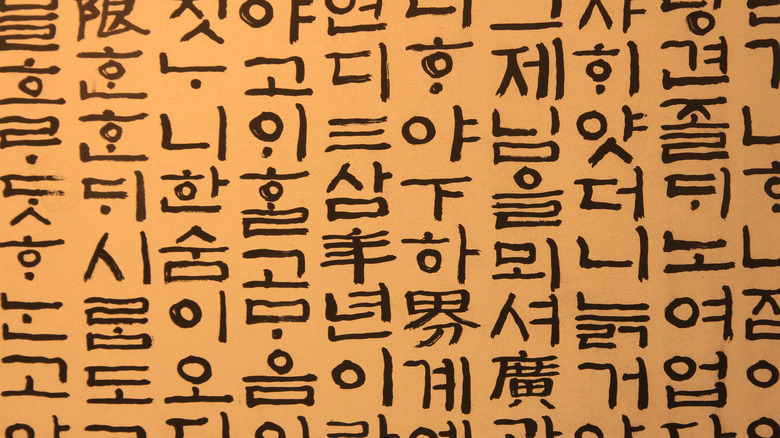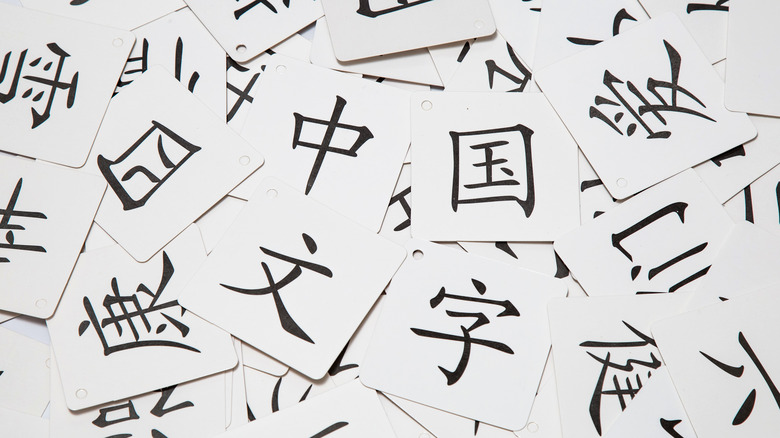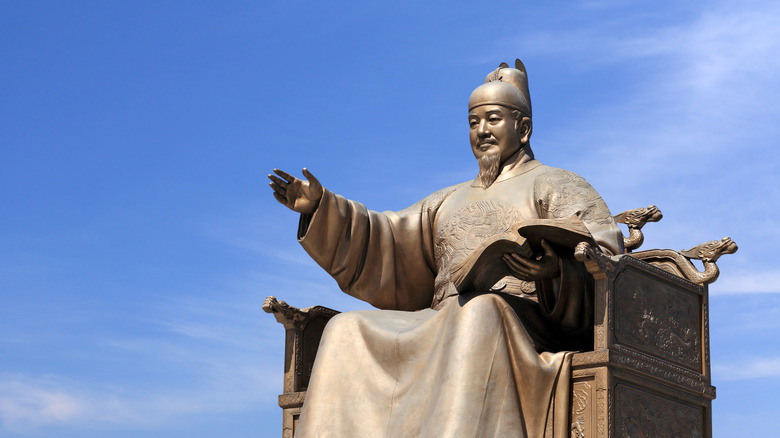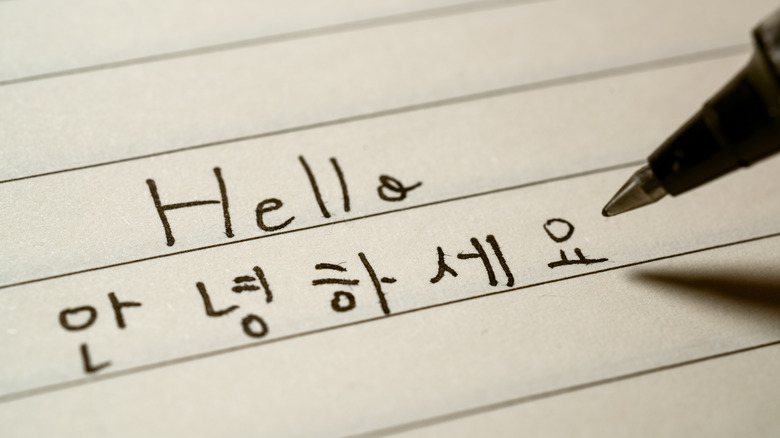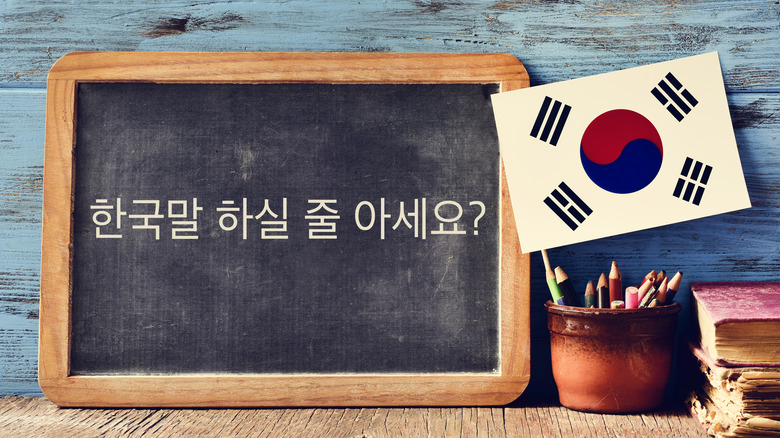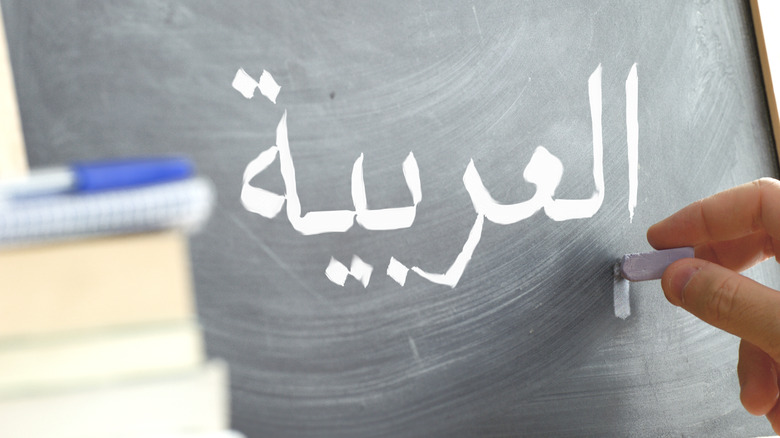How Did The Modern Korean Alphabet Originate?
If your first language is a Romantic or Germanic tongue, you might be forgiven for seeing Korean lettering and assuming the language is non-phonetic. But in fact, Korean is not only phonetic but also has one of the easiest-to-learn alphabets in the world (via What to Do in Korea). Or at least, that's what some Korean speakers say.
Unlike some other languages, the modern Korean alphabet, Hangul, was not created slowly over time but instead deliberately designed by a man named Sejong (via Britannica). Before Hangul, Korea used a system called Hanja, which was adopted from the nearby Chinese language (via 90 Day Korean). That meant it was logographic instead of phonetic. As a result, it was an incredibly hard language to learn. In fact, even today, many people dub the Chinese language to be the hardest language to pick up due to its complex writing system (via Mondly). Sejong saw how difficult it was to learn Hanja and decided to create Hangul as a replacement. But the path to adopting Hangul on a widespread basis was far from smooth.
History of Hanja
Before Hangul was adopted in Korea, the Korean language was written in a form called Hanja (via Institute for Basic Science). Adopted from neighboring China, Hanja was composed of Chinese characters. But that doesn't mean that Korean people spoke Chinese — rather, they took the pictographic character representations from China and used them for their own words.
Chinese characters themselves are thousands of years old (via Brown University). In fact, the earliest forms of Chinese were some of the first written languages ever (via Oldest.org). Some Chinese characters have pictographic origins, but for the most part, characters were designed to combine meaningful and pronunciation-related elements into words. Chinese is undoubtedly a complex language: While the English alphabet only has 26 letters, there are as many as 47,000 characters in Chinese, including 3,500 that most people need to understand to be able to read most documents (per Brown University). Perhaps as a result, literacy rates in China used to sit at less than 20% (via The Globalist).
The inventor of Hangul
When Koreans used the Hanja-based system, they had issues with literacy, too, according to What to Do in Korea. That's why someone decided to do something to change the situation in the 1400s.
Sejong was the ruler of Korea between 1419 and 1450, according to Britannica. He was generally considered to be an accomplished ruler and was concerned about the well-being of his people, according to Asia Society. One of the challenges of his reign was balancing the influence of historic Korean Buddhism with Confucianism, another widespread belief system at the time. Another of the challenges he faced was making education more accessible. Sejong saw how ill-suited the current system of Hanja was for many Koreans, with its lack of clear characters to fit certain Korean words and the sheer amount of time and the energy required to learn all of the existing Hanja characters. So along with a group of educated men, Sejong worked to come up with a better way to do things.
The Hangul system
The Hangul alphabet is a very simple system, though it might take English speakers a minute to get the hang of it. In Hangul, there are 24 letters in total, some of which are vowels and some of which are consonants (via Mondly). As in English, these letters need to be combined into syllables, although the writing is slightly different. While the same letters appear the same in any English word that they appear in, Korean letter signs vary in appearance depending on what other letters they are combined with. When Korean vowels and consonants are combined into syllables, those syllables are written together in a sort of block-like shape on the page. For instance, you can see in the Korean syllable rin, or 린, how the shape is roughly cubic and composed of multiple smaller symbols. Once these syllables have been created, they can be combined to form meaningful words. For instance, 린 could be used in the word girin, or 기린, which means giraffe (via Collins Dictionary).
With only a few dozen letters needing to be learned, Hangul was undoubtedly a simpler system than Hanja. But not everyone in Korea was keen to adopt a new writing system; in fact, Hangul faced some resistance when it was first introduced (via Go Go Hanguk).
How Hangul was adopted
Though Hangul certainly made things simpler for those who couldn't afford an education and those who were not already able to read, rich and scholarly individuals weren't a fan of Sejong's new writing system (via Go Go Hanguk). The new script was certainly very different from Hanja: In addition to being a phonetic language instead of a logographic script, it also read horizontally from left to right, rather than vertically from top to bottom as traditional Chinese writing did (via Brigham Young University). Scholars decided that they would continue to use Hanja.
Later, some leaders of Korea even turned against Sejong's beliefs and decided that they would ban Hangul. In 1504, for instance, just over 50 years after Sejong died, a new king banned Hangul because he saw how powerful the tool of literacy was in peasant hands (via Languages and Numbers). But by the 1940s, once Korea was freed from Japanese colonization, it was time for Hangul to come back in full force (via What to Do in Korea). Now, Hangul is the predominant script in South Korea, though Hanja is still occasionally used, such as in logos or as an additional font on some signs (via Discover Discomfort).
Other languages with unique alphabets
Korea is not the only language with a custom alphabet. Though many Romance and Germanic languages share a core set of letters (via Britannica), other languages have created their own systems of writing that readers have to learn. For instance, Arabic, one of the most widely spoken languages in the world, uses something called an abjad writing system instead of an alphabet (via Arab Academy). The sixth-most-widely-spoken language in the world, Arabic's writing system may be unique, but it's certainly recognizable.
Other languages have alphabets like English but use different letters. Russian and Greek, for instance, are both languages with around 20 to 30 letters (via Language Trainers). Many Russian and Greek letters even look similar to romance languages, with just a few tweaks that make them distinct. Want to get nerdy? There are some human-made alphabets as well — that is, alphabets that were generated not to match naturally spoken tongues but for media, like science fiction novels or movies. Among these languages are Tennobet from "Warframe" and the language of the First Ones from "She-Ra: Princess of Power" (via Digit).
